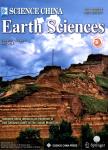Petrogenetic simulation of the Archean trondhjemite from Eastern Hebei, China
Petrogenetic simulation of the Archean trondhjemite from Eastern Hebei, China作者机构:Key Laboratory of Orogenic Belts and Crustal Evolution School of Earth and Space Sciences Peking University
出 版 物:《Science China Earth Sciences》 (中国科学(地球科学英文版))
年 卷 期:2017年第60卷第5期
页 面:958-971页
核心收录:
学科分类:0709[理学-地质学] 070901[理学-矿物学、岩石学、矿床学] 07[理学] 0708[理学-地球物理学] 0704[理学-天文学]
基 金:supported by the National Natural Science Foundation of China (Grant No. 41430207)
主 题:Trondhjemite TTG gneiss Anatexis Phase equilibria modelling Eastern Hebei
摘 要:It is generally believed that trondhjemitic rock, an important component of TTG rocks, is the anatectic product of mafic rocks. However, in many TTG gneiss terranes, for instance, the granulite facies terrane in Eastern Hebei, trondhjemites occur as small dikes, intrusions or leucosomes in tonalitic gneisses, suggesting their origin of in-situ partial melting. Based on the petrological analysis of a tonalitic gneiss sample from Eastern Hebei, in combination with zircon U-Pb dating, we investigated the petrogenesis of trondhjemite through simulating anatectic reactions and the major and trace element characteristics of the product melt at different pressures(0.7, 1.0 and 2.0 GPa). The results indicate that hornblende dehydration melting in a tonalitic gneiss at 0.9–1.1 GPa and 800–850°C, corresponding to the high-T granulite facies, with melting degrees of 5–10wt.% and a residual assemblage containing 5–10wt.% garnet, can produce felsic melts with a great similarity, for instance of high La/Yb ratios and low Yb contents to the trondhjemitic rocks from Eastern Hebei. However, the modelled melts exhibit relatively higher K2 O, and lower CaO and Mg~# than those in the trondhjemitic dikes and leucosomes from Eastern Hebei, suggesting that the leucosomes may not only contain some residual minerals but also be subjected to the effect of crystal fractionation. The zircon U-Pb dating for the tonalitic and trondhjemitic rocks in the Eastern Hebei yields a protolith age of 2518±12 Ma and a metamorphic age of 2505±19 Ma for the tonalitic gneiss. The latter age is consistent with a crystallization age of 2506±6 Ma for the trondhjemitic rock, confirming a close petrogenetic relation between them.



